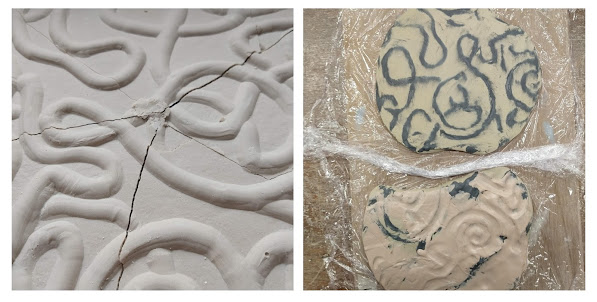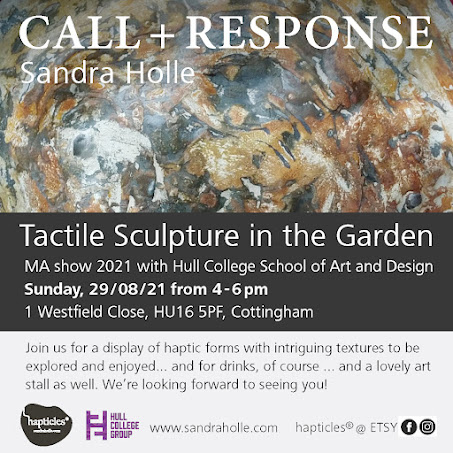More clay pieces in the inlay technique
As I started to develop doubts whether I would achieve the effect I'm after with my layering method in concrete, I decided to run those tests in clay as shown in the previous post:
https://sandraholleart.blogspot.com/2021/04/showing-link-between-ceramics-and.html
The fired results led me to making some domed pieces that I can see as sitting forms or wall pieces.
Here are some documented steps along the way until I had some very rewarding, silky smooth results.
 |
| For the pattern to be inlayed in a different colour, I used a mould from a previous wax carving for a concrete cast. see post https://sandraholleart.blogspot.com/2021/04/drawing-evolved.html |
 |
| The imprint is filled with layers of different coloured clay and then cut back to level |
 |
| On this piece, I added some woven copper wire which I hoped would burn away and leave black traces from the molten copper. |
 |
| burnishing before firing |
 |
| burnishing before firing |
 |
| Two pieces with irregular inlays in an attempt to achieve a mokume gane effect, thus diffusing the visual weight and give it a more lightweight appearance. |
The black lines from the inlayed and burned away copper wire give a stark statement on the
white clay. The organic shapes and emerging patterns are inspired by the neural tissue of the brain. The black burnt lines show the crass consequences of its damage through illness.
 |
This principle of inlay in combination with corrosion through fire I can see as widely applicable to my work, be it clay or concrete. |





Comments
Post a Comment